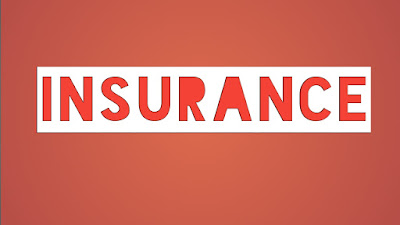HOW INSURANCE WORKS
- The mechanism of insurance is very simple. People who are exposed to the same risks come together and agree that, if any one of them suffers a loss, the others will share the loss and make good to the person who lost. All people who send goods by ships are exposed to the same risks, which are related to water damage, sinking of the vessel, piracy, etc. Those owning factories are not exposed to these risks, but they are exposed to different kinds of risks like fire, hailstorms, earthquakes, lightning, burglary, etc. Like this, different kinds of risks can be identified and separate groups made, including those exposed to such risks. By this method, the heavy loss that any one of them in the group may suffer (all of them may not suffer such losses at the same time) is divided into bearable small losses by all the others in the group. In other words, the risk is spread among the community and the likely big impact on one is reduced to smaller manageable impacts on all. Insurance helps to spread the costs or risks.
- If a Jumbo Jet with more than 350 passengers crashes, the loss would run into several crores of rupees. No airline would be able to bear such a loss. It is unlikely that many Jumbo Jets will crash at the same time. If 100 airline companies flying Jumbo Jets, come together into an insurance pool, whenever one of the Jumbo Jets in the pool crashes, the loss to be borne by each airline would come down to a few lakhs of rupees. Thus, insurance is a business of 'sharing'. It makes an unbearable loss, bearable..
- There are certain principles, which make it possible for insurance to remain a preferred and fair arrangement. The first is that it is difficult for anyone individual to bear the consequences of the risks that he is exposed to. It will become bearable when the community shares the burden. The second is that the peril should occur in an accidental manner. Nobody should be in a position to take the risk happen. In other words, none in the group should set fire to his assets and ask others to share the loss. This would be taking unfair advantage of an arrangement put into place to protect people from the accidental risks they are exposed to. The occurrence has to be random, accidental, and not the deliberate creation of the insured person.
- The manner in which the loss is to be shared can be determined beforehand. It can be equal among all. It can also be proportional to the risk that each person is exposed to. The trader who has sent Rs 100 lakhs worth of goods on a ship will bear double the loss to be borne by another trader who has got Rs. 50 lakhs worth of goods on the same ship. The current practice is to make the sharing proportional to the exposure to risk. The share could be collected from the members after the loss has occurred or the likely shares may be collected in advance, at the time of admission to the group. Insurance companies collect in advance and create a fund from which the losses are paid.
- The collection to be made from each person in advance is determined on the basis of assumptions. While it may not be possible to tell beforehand, which person will suffer, it may be possible to tell, on the basis of past experiences, how many persons, on average, may suffer losses. The following three examples will explain the above concept of insurance.
Example-2
There are 1000 persons who are all aged 50 and are healthy. It is expected that, on average, 1% of persons aged 50, or 10 persons, may die within one year. If the economic value of the loss suffered by the family of each dying person is taken to be Rs.20,000, the total loss would work out to Rs.2,00,000. If each person in the group contributed Rs.200, the common fund would be Rs.2,00,000. This would be enough to pay Rs.20,000 to the family of each of the ten persons who die. Thus, the risks are shared by 1000 persons, although 990 of them did not suffer any loss
Example 3
In the first example, assume that are 400 houses but of different values. In that case, the contribution of each house owner would be 1% of the value of the house. If the assumption was that 8 (2%) out of 400 houses are likely to get damaged, the contribution would be 2% (probability of risk) of the value for each house. The probability of risk does not depend on the value of the house. The probability of risk would depend on factors like the nature of construction of the house (concrete or thatch work) or the location in which it is (residential, commercial or industrial area). The risk is measured in terms of percentages and the contribution would be that same percentage. Similarly, in the case of human beings, the probability of risk (death or disability) will vary according to age, profession, lifestyles and habits, health conditions, heredity, etc.
You May Like Also
Also Like This












0 Comments